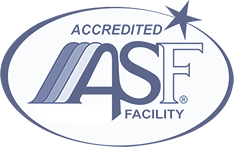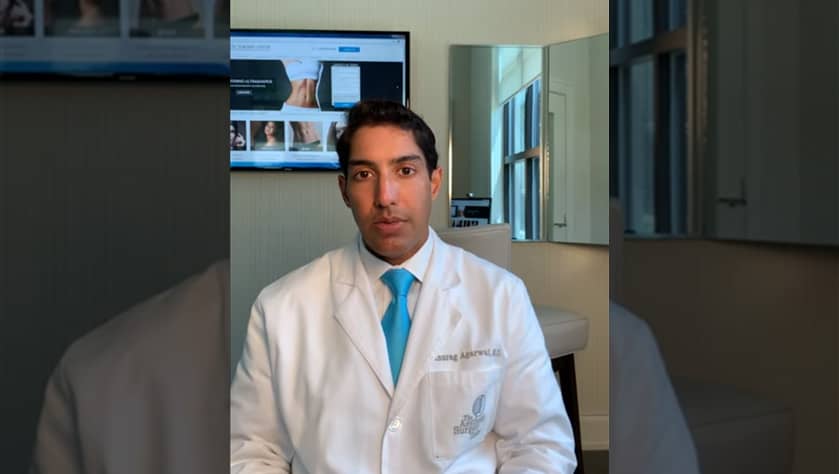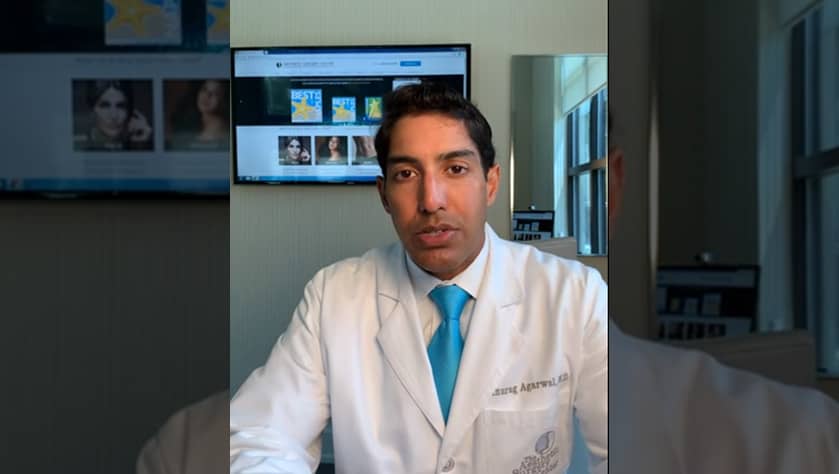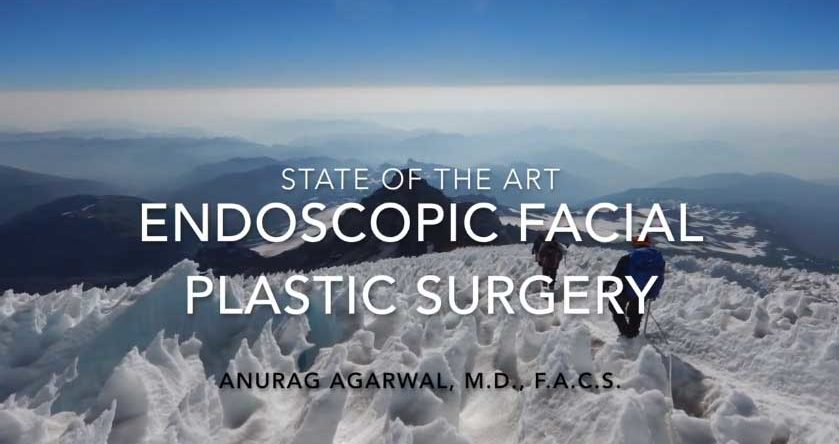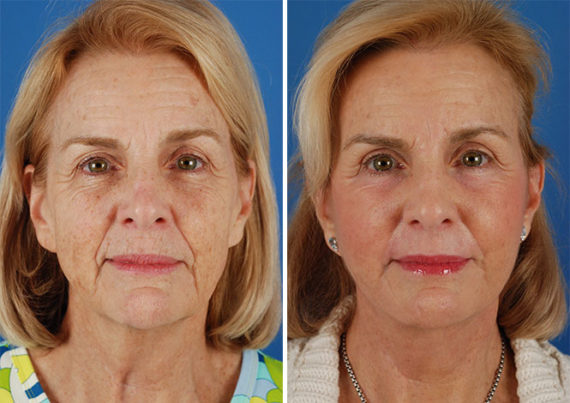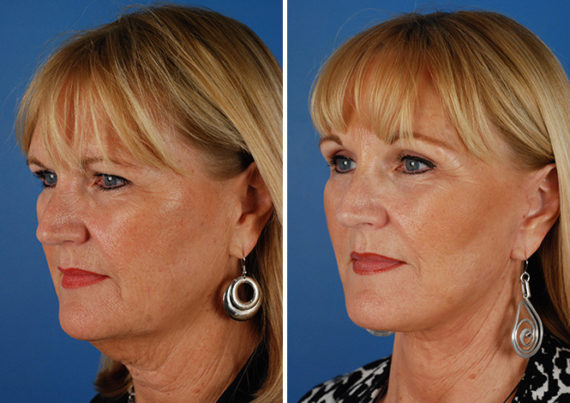Benefits and Beauty Through Facelifts
Discover a renewed sense of self through the transformative benefits of a facelift. Not only does this aesthetic procedure tackle visible signs of aging, but it also revitalizes your confidence and outlook on life. The benefits go beyond mere appearances, providing a comprehensive rejuvenation.
Our Achievements
Endoscopic Facelift
Generally speaking, a facelift does not stop the aging process or take away fine lines, but it does result in a more youthful appearance, a better-defined jawline, and a firmer neck. Many patients are concerned about appearing “fake” or “done” after such a procedure. However, if an experienced practitioner completes the facial rejuvenation procedure, it will not be obvious that any cosmetic work has been done. Rather, the person will simply look younger, less tired and in many cases, healthier. The surgeons with the highest success rates regarding such procedures typically ascribe to the philosophy that the ultimate goal of cosmetic work is to ensure clients still look like themselves but appear younger and more vibrant than before the procedure.

Dr. Agarwal and Dr. Holmes customize every facelift to maximize the patient’s unique facial features, needs, and goals. Most often a multiplanar or multi-layer approach is chosen to achieve the most natural and desired look. This allows our surgeons the ability to restore your youthful identity. Custom-designed facelifts (when combined with the endoscopic technique) permit the vertical repositioning of target areas to achieve the most natural “lift” to the face. This customizing concept is especially important for men whose needs and goals are different from women.
The desired look is one that is refreshed, rested and youthful. The earlier in the aging process that a facelift is performed, the more enduring are the results.
What to expect in a Facelift Consultation
As with any cosmetic procedure, there is an initial consultation between the client and the surgeon before the procedure is scheduled. During the consultation, prospective patients are asked about the specific goals they hope to achieve with a full facelift. The surgeon then informs the client whether or not these goals are realistic and also makes recommendations concerning areas where he or she thinks improvements can be made. The surgeon will also discuss how the procedure is completed, what the client must do prior to the surgery, expectations following the procedure and facts about the recovery period. The doctor will gather facts about the prospective patient’s health history during the consultation, as well. The client will then be given an estimate of the procedure’s cost.
What is a Facelift and what does it address?
Who are the best candidates for a facelift?
Endoscopic Facial Plastic Surgery
The Best Candidates for a Facelift
Although many individuals can benefit from endoscopic facelift surgery, surgeons typically agree that the best candidates share the following characteristics.
- Have loose skin on the neck or face, with jowls
- Look older than their years
- Enjoy good physical health
- Are well-adjusted emotionally
- Will carefully follow preoperative and postoperative instructions
Additionally, the best facelift candidates should have good skin elasticity, as supple skin heals more rapidly than dry, sun damaged skin. Ideal candidates should also have realistic expectations regarding the procedure. Even though truly remarkable results can be achieved with a rhytidectomy, all cosmetic procedures are associated with certain limitations.
To learn more about Facelift, as well as other state-of-the-art surgical procedures the Aesthetic Surgery Center doctors perform, please contact us.
CALL TODAY TO SCHEDULE YOUR CONSULTATION
Facelift Procedure
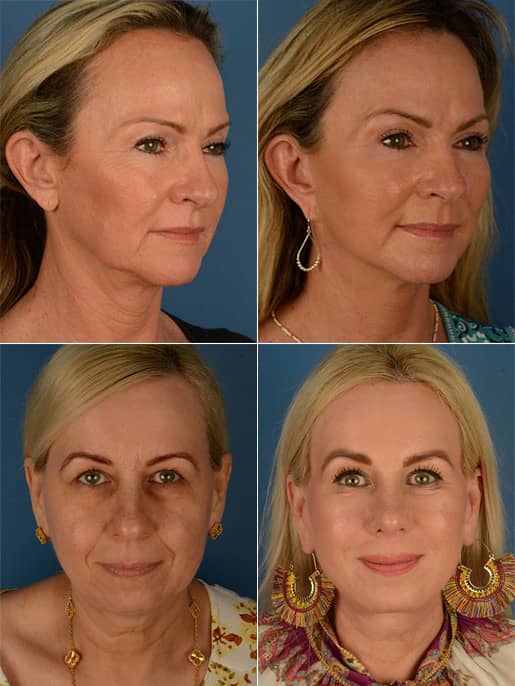
The rhytidectomy procedure is typically performed under intravenous anesthesia at our AAAASF certified outpatient surgical facility. Incisions for a lower face and neck lift follow the normal curvatures of the ear, around the earlobe and behind the ear into the hair. Because the majority of individuals already have wrinkles in these areas, the incisions are well concealed following the surgery. Connective tissues and sagging muscles are lifted vertically upwards and tightened during the procedure, followed by removal of excess skin. In certain instances, fatty deposits are suctioned out from beneath the neck and chin. Sutures are then used to close the small incisions.
Endoscopic procedures allow the surgeon access to hard-to-reach areas. These difficult-to-reach areas are in the central third of the face, including frown lines between the brows, the folds adjacent to the nose and the lines around the mouth. Tiny incisions are made behind the hairline in the temple. Using fiber-optics and a video camera, the sagging skin and soft tissue in the face and neck can be precisely lifted to their proper position. The lax and tired muscles of the face are surgically tightened and lifted to regain natural and pleasing facial contours while preserving skin, hairline and skin sensitivity. Because this procedure preserves the fabric of the skin, it is suitable for patients in their late 40’s, 50’s, and onwards.
An UpliftTM lower face and neck lift can be performed alone or combined with endoscopic approaches to the forehead and midface (cheek area). The most pleasing results are created when rhytidectomy is performed in combination with eyelid surgery, forehead lifts, and laser resurfacing.
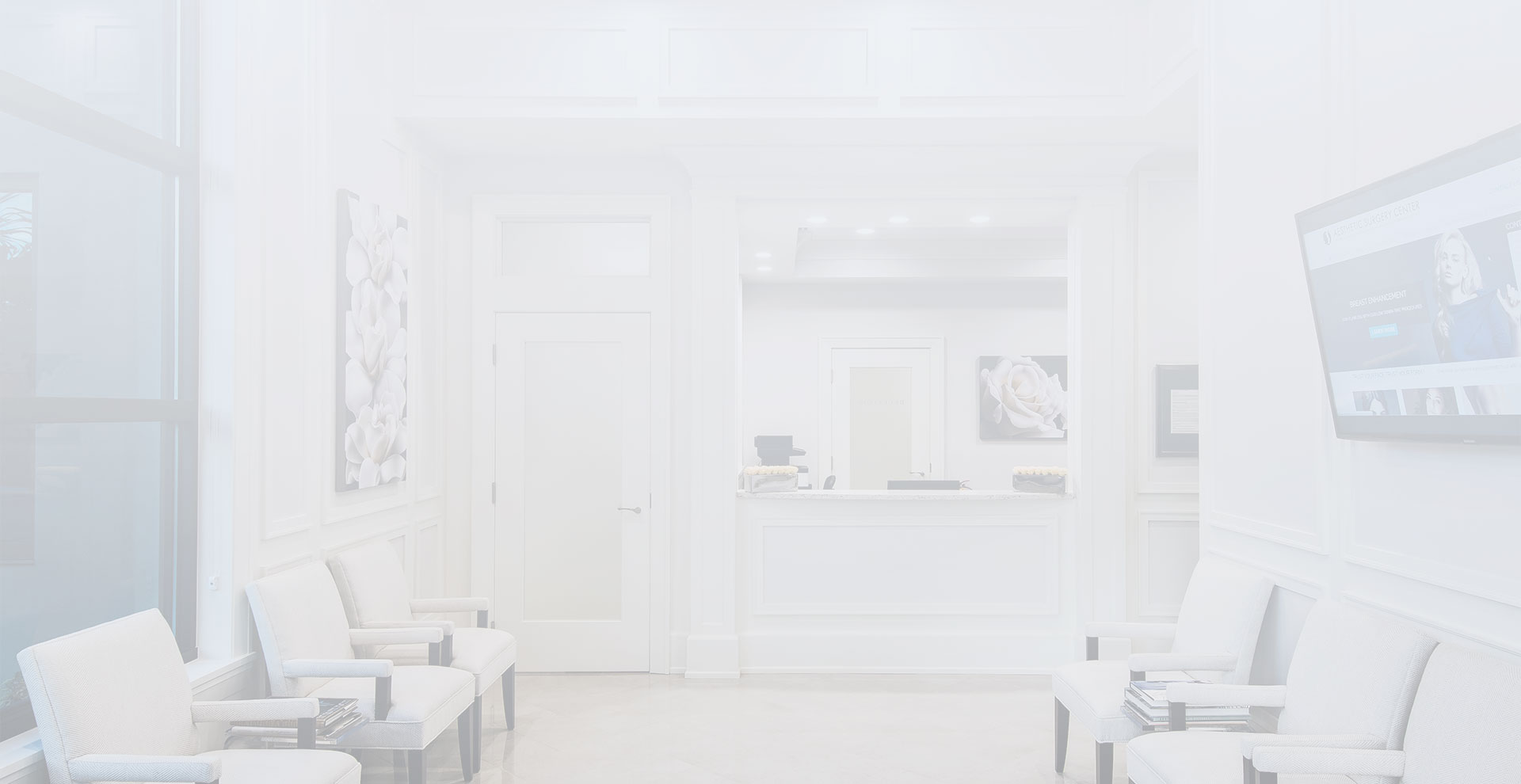
Facelift Before & After Photos
* Each patient is unique and individual results may vary.
Facelift Recovery
Following Naples facelift surgery, patients are discharged to their home with a caregiver (friend, significant other, etc…). Some patients choose to hire a private duty nurse to stay with them through the night in their own home. These options can be discussed with the surgeon during the initial consultation.
The dressing is removed the day after the procedure, while drains usually stay 2-3 days. Incision care instructions are then reviewed.
Some of the sutures are removed between one and two weeks after the procedure, and some of the sutures dissolve on their own.
Most patients experience discomfort or pain for the first 24-48 hours, which is well controlled with pain medicine. The surgeon will prescribe medication to keep postoperative patients more comfortable as they recover. It is common to have a certain degree of bruising and swelling following an endoscopic facelift procedure. Most patients are instructed to use cold compresses and avoid running or similar activities to keep swelling at a minimum. To prevent excessive swelling and the possibility of infection, a short course of post-operative steroids or antibiotics are often prescribed. Patients are encouraged to inform their surgeon of any severe or unusual side effects. Our plastic surgeons believe in meticulous post-op care and will see post-operative patients on a regular basis during the first two weeks after the procedure. They generally have follow-up visits with their patients at scheduled intervals for the first one year post-operatively.
Different types of facelifts
How Can I Extend the Duration of My Facelift Results?
Choosing the Right Endoscopic Facelift Surgeon
Because any type of cosmetic procedure is associated with a specific number of risks, it is essential to select a plastic surgeon that is both compassionate and experienced. Dr. Agarwal’s and Dr. Holmes’s experience in facial plastic surgery and their rapport with patients of all ages and from all walks of life makes them an ideal choice for those planning endoscopic facelift surgeries.
Dr. Agarwal and Dr. Holmes are highly qualified to perform numerous cosmetic procedures with the skill and precision that only an experienced surgeon can offer. For this reason, anyone who is considering a rhytidectomy should schedule a consultation with Dr. Agarwal or Dr. Holmes to learn about all the options. In this way, prospective clients can discuss the pros and cons of various facelift methods and discover whether or not rhytidectomy is a wise choice.
Non-Surgical Options besides Facelift
The Aesthetic Surgery Center has several non-surgical facelift options in Florida, but this is really a misnomer. A true facelift is a surgical procedure with unparalleled results, and performed by our plastic surgeons daily, especially when other overhyped oversold non surgical options have failed (i.e. Ulthera, Thermage, etc…). While non-surgical options cannot achieve the results of a true facelift, they can accomplish several goals. Some of these non surgical options include:
- Laser Treatments
- Injectables
- ThermiSmoothTM.
These treatments can all help with signs of aging with varying amounts of downtime, longevity, and outcome. Lasers can help reduce the appearance of fine lines, wrinkles, and blemishes, while tightening the skin. Depending on the type of laser chosen (i.e. Erbium-YAG, fractional CO2 laser, ablative CO2 laser, etc…), the initial downtime varies from few days to several weeks. Injectable fillers and Botox Cosmetic are also common treatments administered to lift the face, and often called a “liquid facelift”. They are used to reduce wrinkles, volumize the face, and lift the eyebrows non-surgically.
Injectables are convenient, minimally invasive, and have minimal down time. ThermiSmoothTM is a radiofrequency skin tightening procedure that requires no downtime but is performed in a series of four weekly treatments by our aestheticians. There is no downtime. It works by heating the skin to a desired temperature which induces skin tightening by collagen contraction and remodeling, as well as long term stimulation of collagen production. Please contact the Aesthetic Surgery Center at 239-594-9100 for a consultation for non-surgical options to reduce fine lines or tighten facial skin.
Related Procedures: Rhinoplasty, Revision Rhinoplasty, The UpLift Facelift, Endoscopic Mid Facelift Surgery, Eyelid Surgery, Chin & Cheek Surgery, Skin Cancer Reconstruction, Hair Transplant Surgery, Surgery of the Ears, Fat Transfer (Fat Grafting), Lip Augmentation, Endoscopic Eyebrow Lift, Scar Revision
Why choose Aesthetic Surgery Center
Dr. Anurag Agarwal, M.D., F.A.C.S.
- Double board-certified facial plastic surgeon by the American Board of Facial Plastic and Reconstructive Surgery and the American Board of Otolaryngology – Head and Neck Surgery.
- Oral examiner and Board of Directors for the American Board of Facial Plastic and Reconstructive Surgery
- Former President of the Florida Society of Facial Plastic and Reconstructive Surgery
- Received his Doctor of Medicine at Philadelphia’s MCP-Hahnemann School of Medicine in 1999 and was elected to the Alpha Omega Alpha Honor Society.
- In 2016, Dr. Agarwal was honored at the annual American Academy of Facial Plastic and Reconstructive Surgery national meeting.
- Board-certified plastic surgeon by the American Board of Plastic Surgery.
- Attended medical school at UNMC (University of Nebraska Medical College).
- Was elected to the Alpha Omega Alpha Honor Society.
- Member of The Aesthetic Society, the Florida Medical Association, and Collier County Medical Society.
- General surgery residency at Loyola University Medical Center in Maywood, IL
- Plastic surgery residency at Cleveland Clinic Florida
Facelift FAQs
An individual consultation with one of our Naples board-certified surgeons, Dr. Agarwal or Dr. Holmes, is the best way to determine which procedure is best suited to meet your goals. During this consultation, the surgeon will listen to your goals, examine you, and explain proposed changes to you.
No. The beauty of this procedure is that the face is strengthened in multiple layers during an endoscopic facelift. The flexibility of this procedure allows it to be custom designed to suit the needs of a 42-year-old, or a 69-year-old.
There is some amount of bruising after a facelift. This varies from individual to individual. Because the endoscopic facelift technique requires good visualization during the surgery, bleeding is kept to a minimum. As a result, bruising is minimized.
Our plastic surgeons use fine, delicate sutures to close all incisions. The majority of these are dissolvable. The remaining sutures are removed about 7-14 days post-operatively.
Our board-certified surgeons, Dr. Agarwal and Dr. Holmes use ultra-thin drains for about two to three days post-operatively in order to reduce bruising and swelling.
Ideally, we recommend coloring your hair a couple of days before your endoscopic facelift. You can color it again 3 weeks post-operatively.
Generally speaking, you can begin putting and chipping at two weeks. You can resume your full swing at three weeks.
Men who have facelifts can use an electric razor gently two days post-operatively. Care must be taken to avoid all sutures. Shaving with a blade can be undertaken three weeks post-operatively.
After an endoscopic facelift, you will be able to drive your own car about 3-4 days post-operatively, provided that you are not still taking narcotic pain medicine.
Smoking has been shown in numerous scientific publications to dramatically affect the healing of facial skin and soft tissues post-operatively. At the minimum, you should stop smoking completely 2 weeks prior and for 2 weeks after a facelift. If you absolutely cannot stop smoking and are willing to accept the higher risk of skin flap necrosis, hyperbaric oxygen may be utilized before and after the facelift to reduce but not eliminate the chances of wound healing problems. In a limited subset of patients, the endoscopic technique can be adjusted so that the skin layer is not disturbed, thereby preserving its blood supply while your surgeon works on deeper layers.
The UpliftTM lower face and neck lift is a procedure that works in the deep plane, lifting the SMAS and platysma muscle layers while preserving the skin’s important attachments to the muscle layers. However, our surgeons prefer to avoid the traditional deep plane lift scar that extends in front of the temple hairline as it can become more visible over time. If the upper cheek requires elevation, then our surgeons utilize an endoscopic subperiosteal midface lift, which has incisions hidden behind the hairline instead of at the hairline, and also lifts the face in the deepest plane possible, the subperiosteal plane. Read our blog to learn more about how our facelift techniques compares to other facelift procedures.

